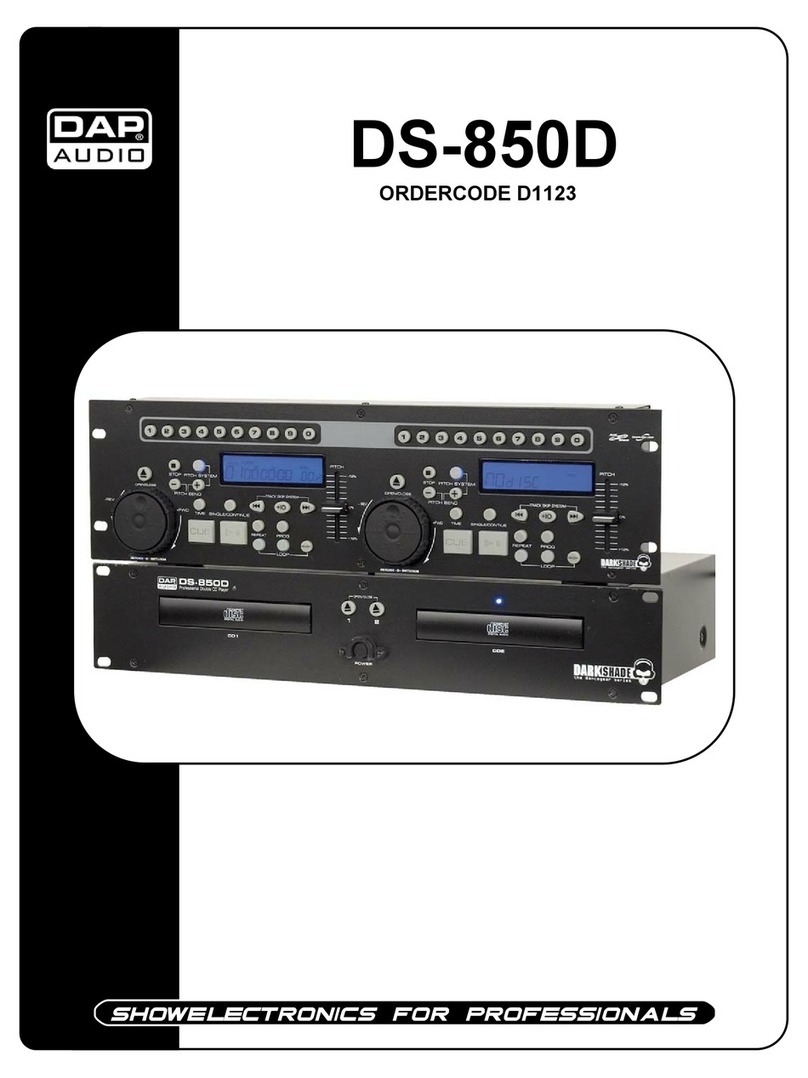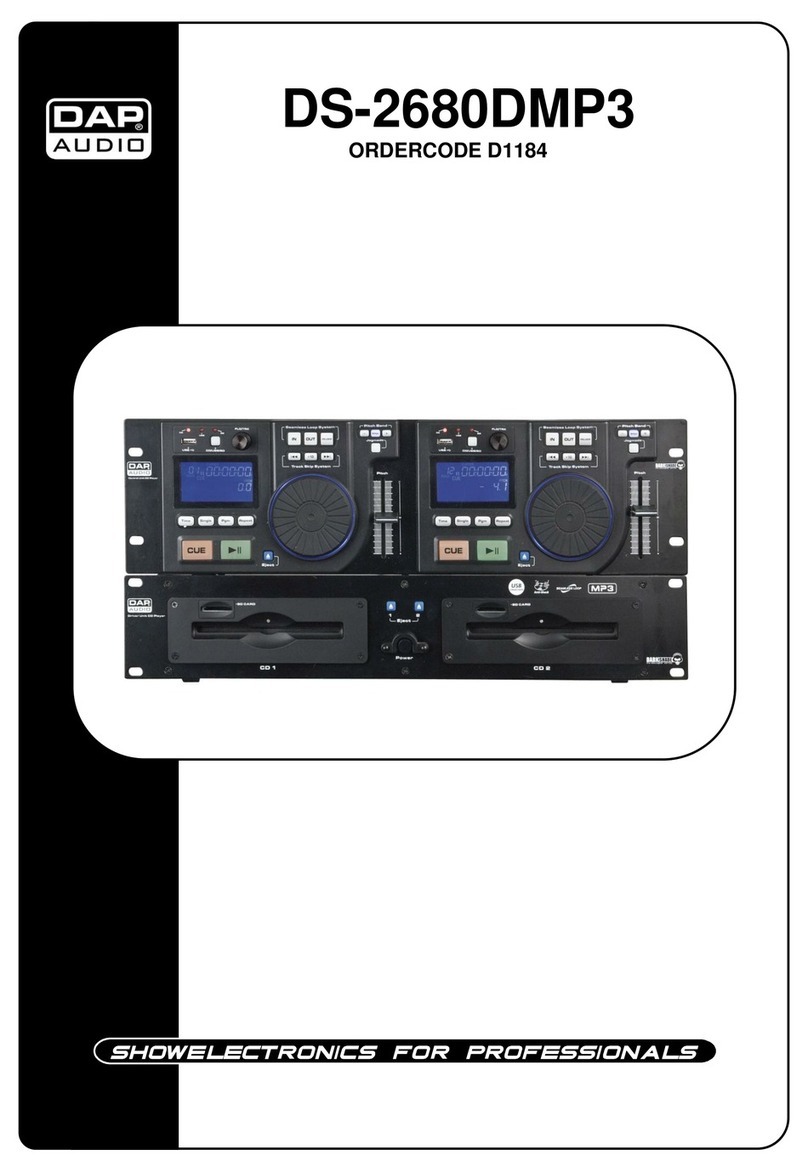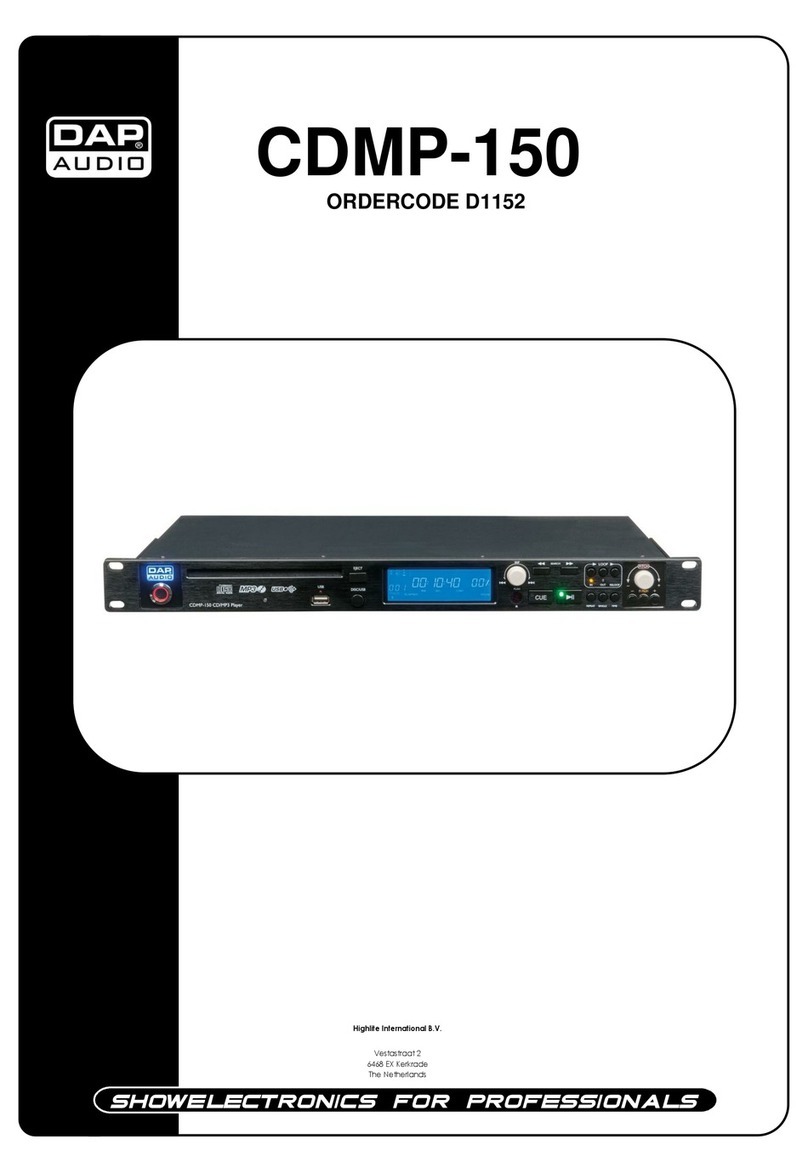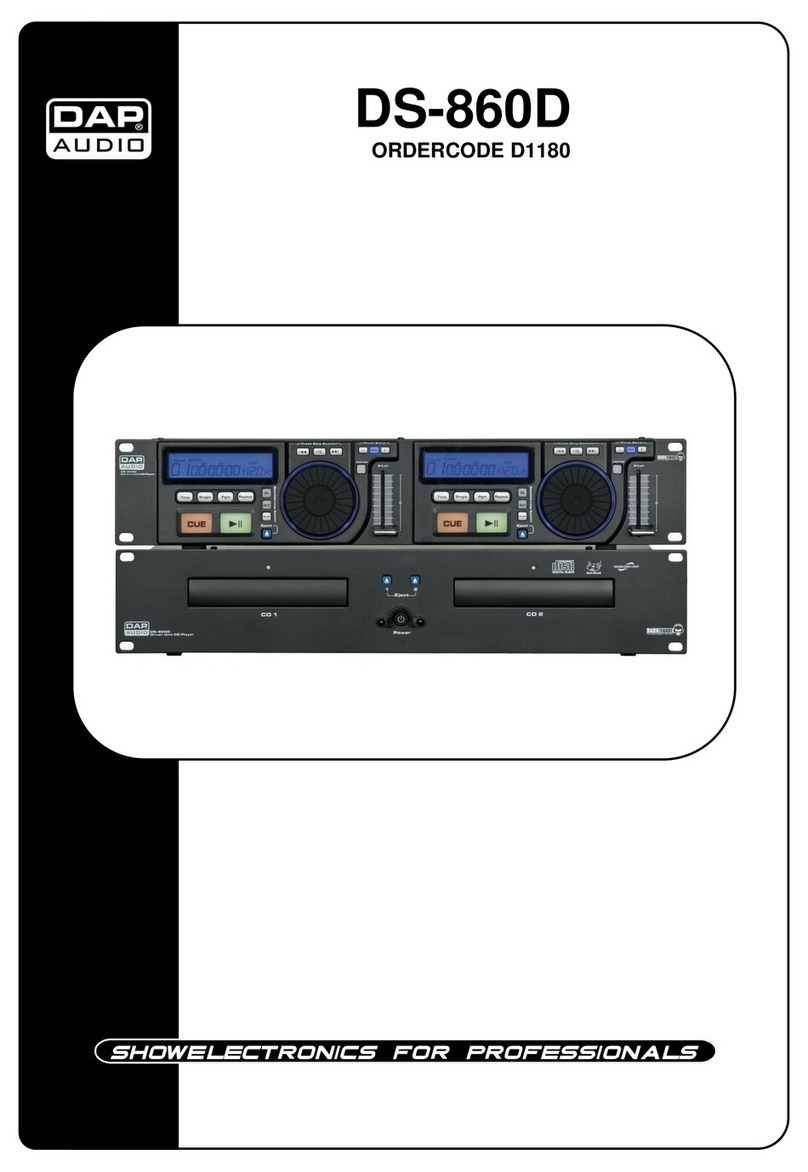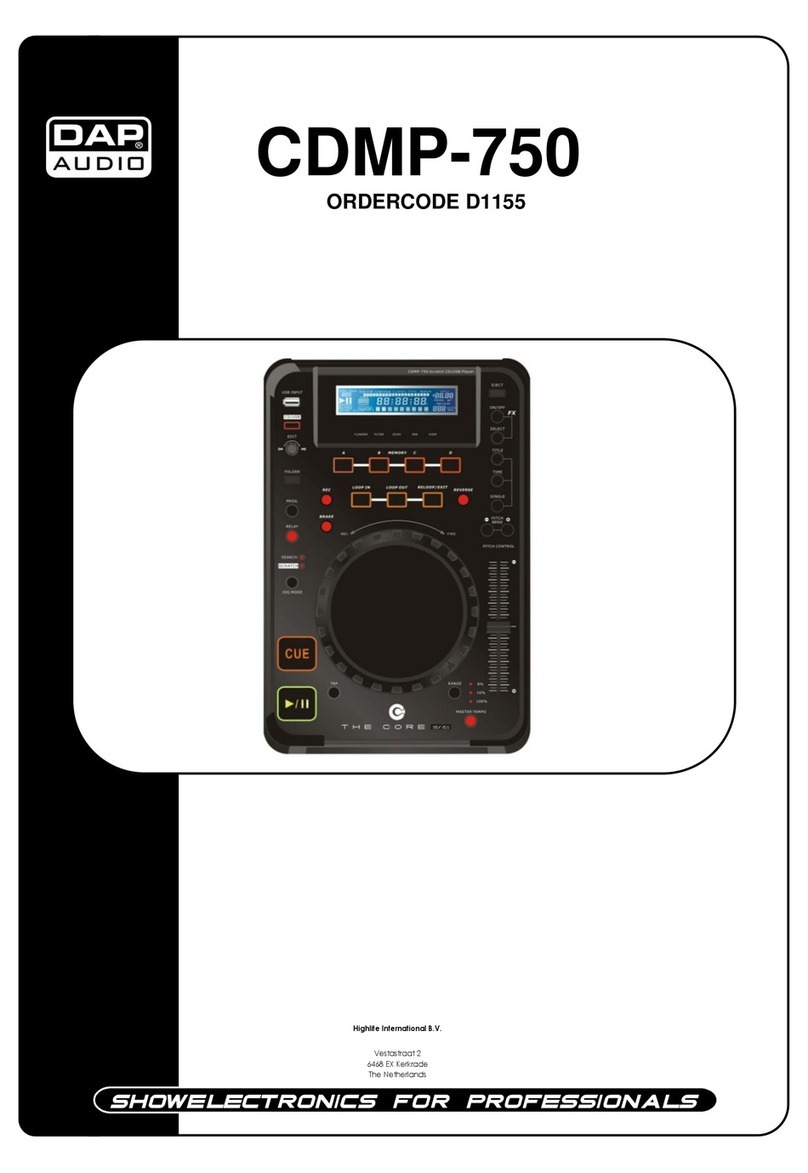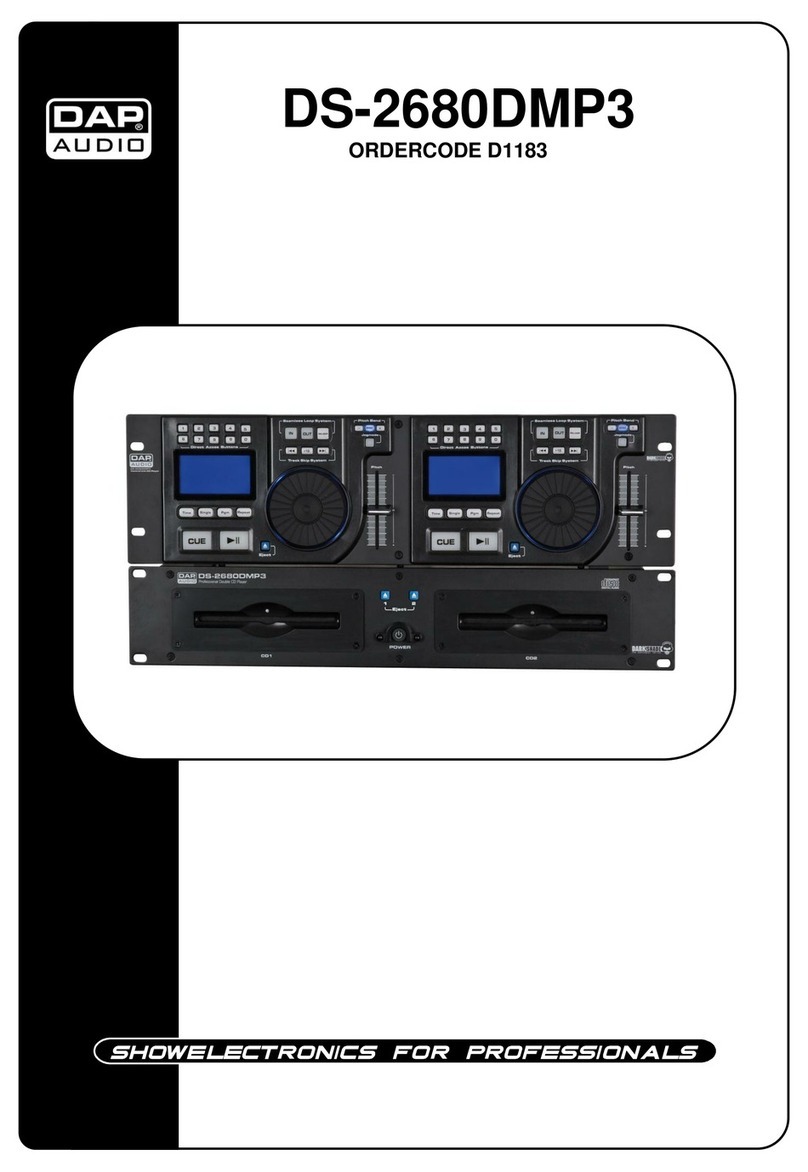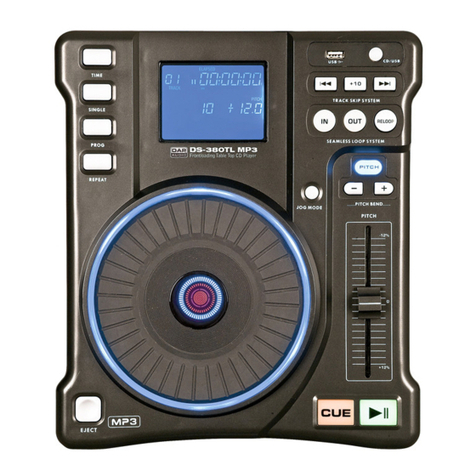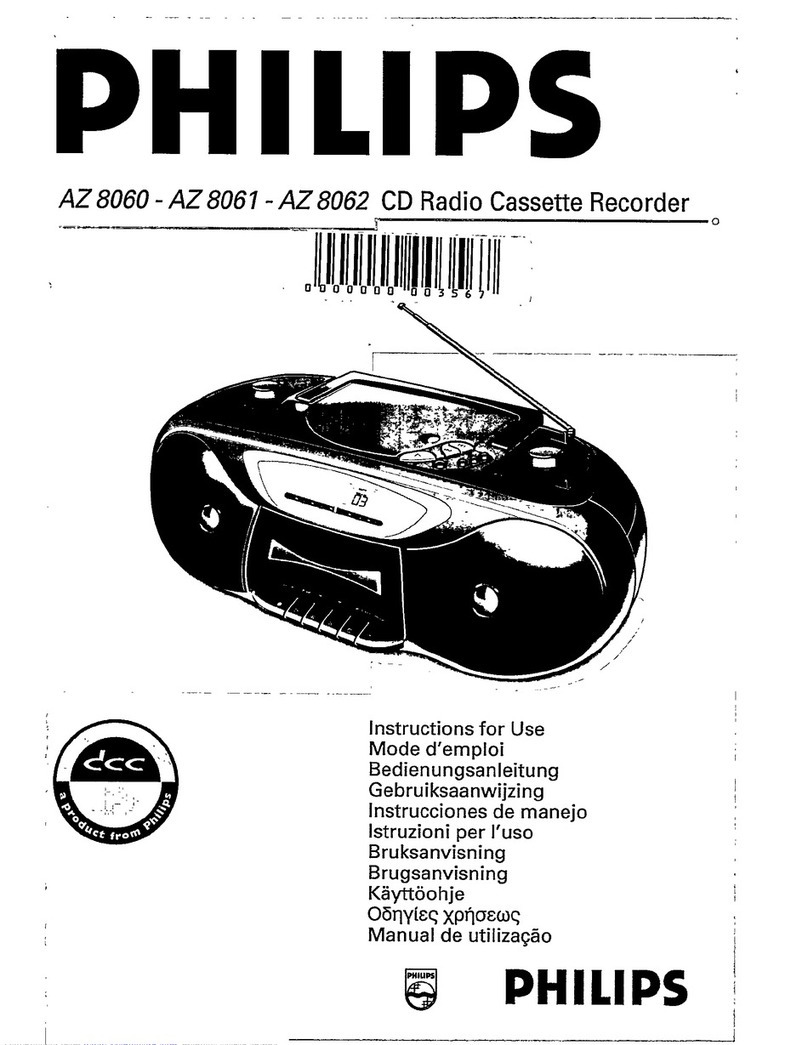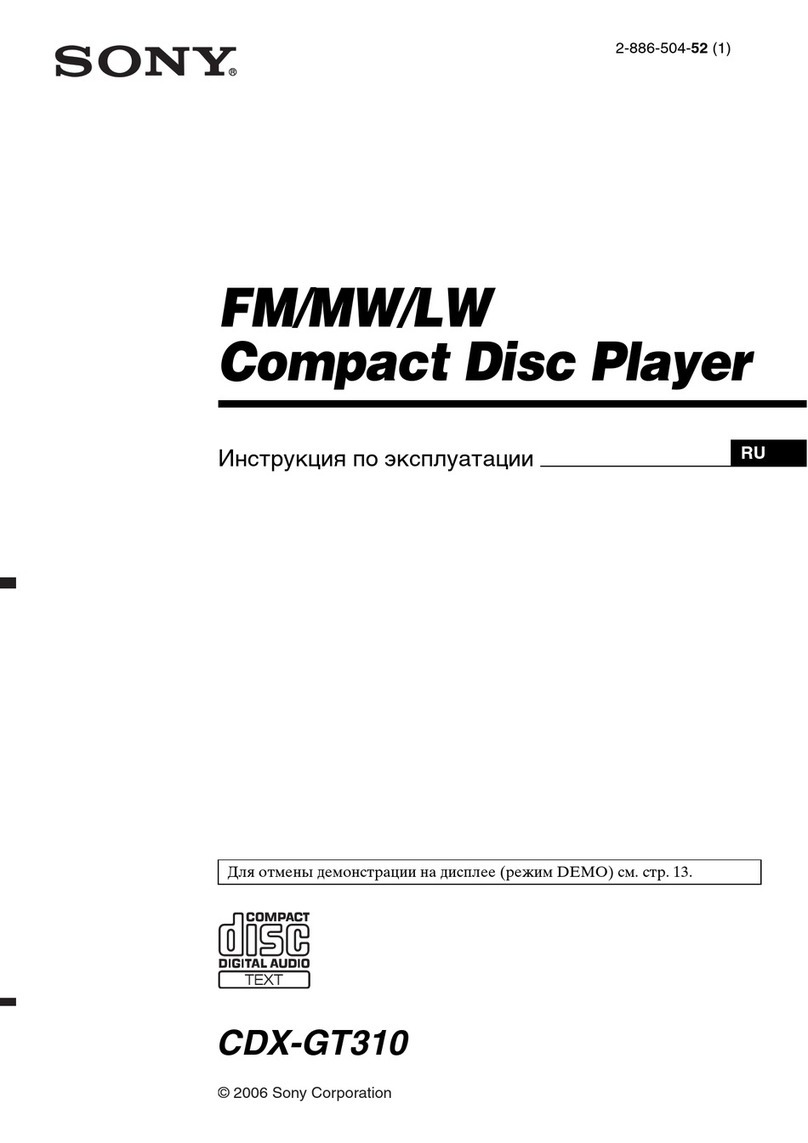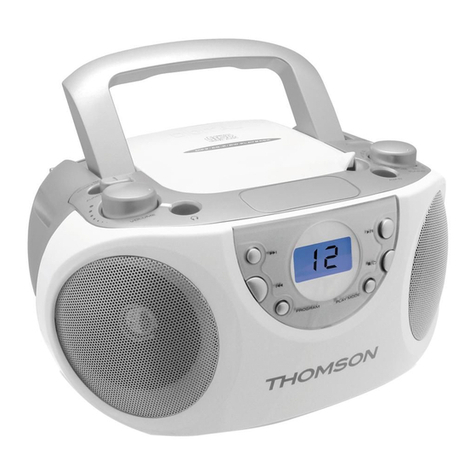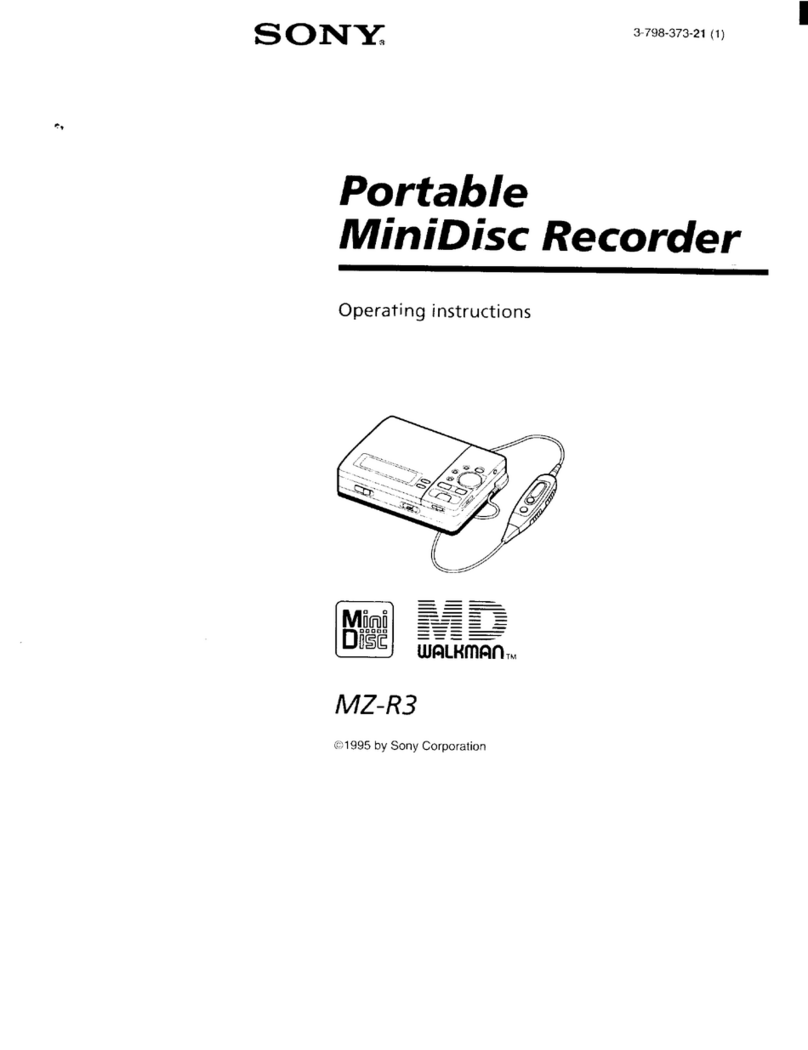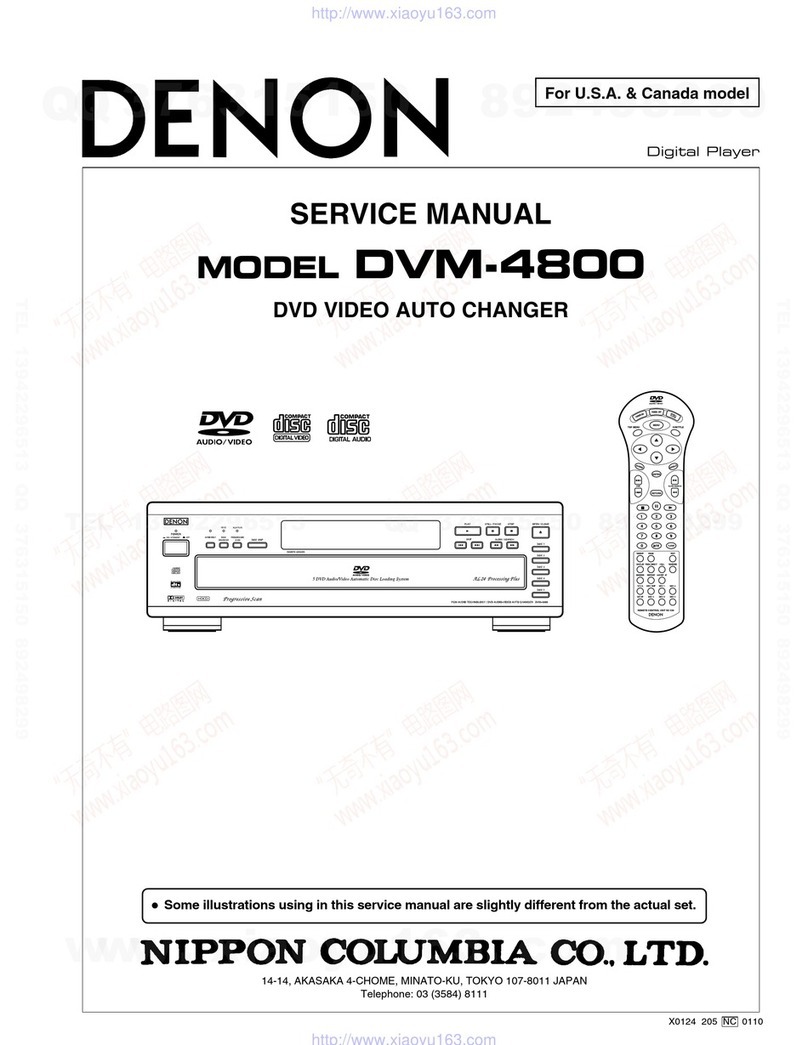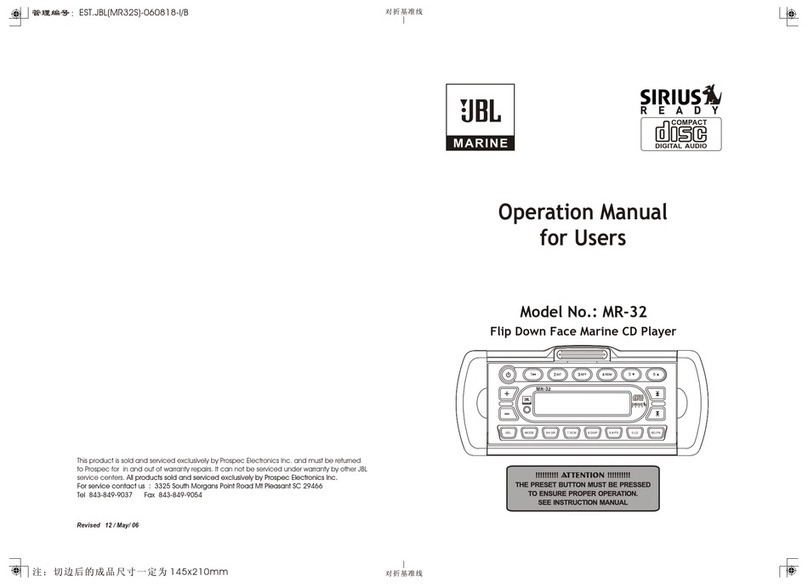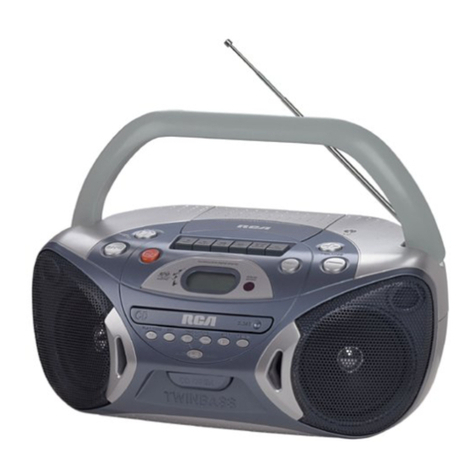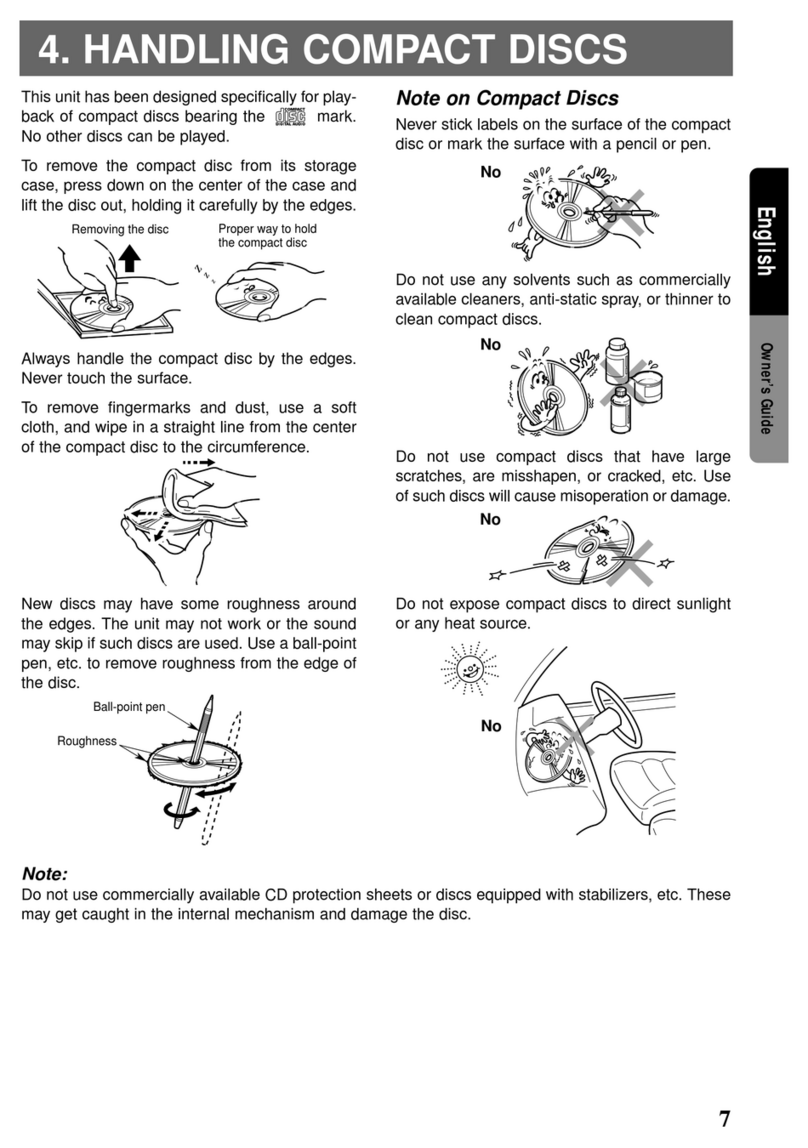
7
Functions
NAMES UND FUNCTIONS
Below is a description of the functions of the controls.
Main Unit
1) POWER (Power ON/OFF-Switch): When the POWER-switch is pressed the POWER turns on.
2) Disc Holder: Place the disc in the holder. Press the OPEN/CLOSE-button to open and close the disc
holder.
3) OPEN/CLOSE (Open/Close-button): Press this button to open and close the disc holder. The disc
holder cannot be opened during playback, so stop playback before pressing the button.
4) REMOTE CONTROL CONNECTOR: Connect this connector to the control unit using the included control
cord.
5) LINE OUT 1 and 2: The audio signal from each player is sent to these jacks.
6) DIGITAL OUT SOCKET: The music-signal from this socket is digital. Connect the output to the respective
input of a digital amplifier for example.
Control Unit
1) SHUTTLE (Shuttle Dial): Use the dial to select the scanning direction and speed. The disc is scanned in
the forward direction when the shuttle dial is turned clockwise from the neutral position, in the reverse
direction when the shuttle dial is turned counterclockwise. The scanning speed increases when the
shuttle dial is turned faster.
2) OPEN/CLOSE (Open/Close-button): Press this button to open and close the disc holder. The disc
holder cannot be opened during playback, so stop playback before pressing the button.
3) TIME (Time button): Press this button to switch the TIME-Display between the elapsed time and
remaining time. The selected mode is indicated by the ELAPSED and REMAIN indicator on the LCD.
4) LCD
5) SGL (Single-button): Press this button to switch between the single and continuous play mode.
The Single mode is indicated by the SINGLE-indicator on the LCD and the Continuous mode is indicated
by the CONTINU-indicator on the LCD.
6) PROGRAM (Program-button): Press the Program-Button, the player will enter the program mode and
stop the CD playback.
7) PROGRAM-Indicator: The PROGRAM-LED lights when the program modus is set.
8) LOOP-Indicator: When the LOOP-Start point is set, the LED flashes. When in LOOP-Mode, the LED
lights.
9) PITCH-Indicator: When the indicator lights, the pitch adjustment is enabled.
10) PITCH-Slider: Use this slider to adjust the CD pitch. Slide up to decrease the pitch, slide down to
increase the pitch.
11) JOG (Jog Dial): When the dial is turned during the CD pause, the point at which the sound is being
produced, moves by a number of frames corresponding to the number of clicks. Clockwise moves the
point forward, counterclockwise moves the point backward.
12) B. SKIP : Use this button to go back to the beginning of the current track or select a previous track
for playing.
13) CUE-Indicator: When CUE-Mode is active, the Cue indicator lights.
14) CUE (Cue-Button): Press the CUE button during playback to return to the position at which playback is
started.
15) +10 (Track + 10 Button): Use the button to skip ahead 10 tracks.
16) PLAY-Indicator: The PLAY indicator lights during play mode.
17) PLAY/PAUSE-button: Use this button to start playback. Press once to start playback, twice to set the
pause mode, and thrice to resume playback.
18) F.SKIP : Use this button to skip to the next track.
19) LOOP (Loop-Button): Press the LOOP-button to set the loop startpoint. Press the LOOP-button again to
set the loop endpoint.
20) PITCH –button: The CD slows down while this button is pressed. Release the button to return to the
